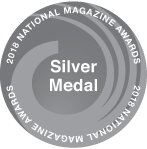Staff
Holly Pattison
Member of Creative Nonfiction Board
Holly Pattison started at the MHR as Circulation Manager (2001-2006.) She was thrilled to join the Creative Nonfiction Board when it was created in 2008. After graduating from UVic's Writing Program in 2005, she started working at the UVic Faculty of Law and has been at the Environmental Law Centre for over 5 years. Holly has published journalism, creative nonfiction, and photography in several magazines and newspapers. She is also a filmmaker specializing in environmental documentaries.
Describe your ideal creative nonfiction piece.

My ideal CNF piece has fresh and lively writing that propels readers through a story. It relies on concrete images, vivid scenes, and experiences that resonate beyond the author’s personal experience. I’m generally drawn to pieces that are literary (yet humble) and evocative (without trying too hard). There has to be a natural flow. I like to feel like I'm tagging along with the author as they experience a change or gain some new insight throughout the piece.
Who is your favourite (for the moment or all-time) creative nonfiction writer?
Oh, I have so many favourites (and I’m sure I’ll have many more after Canada Reads announces their True Stories Top 40.) George Orwell’s essay “Shooting an Elephant” still captivates me, but I really like Annie Dillard’s nature writing, particularly Pilgrim at Tinker Creek. Currently, I’m re-enjoying Stephen Hume’s Bush Telegraph. Hume is known for his journalism, but I find his creative nonfiction about local (BC’s) history and the natural world compelling. Every time I read “Huckleberries” I want to dash out to the forest so I can forage berries to bake in a huckleberry pie.
From the time you started on our creative nonfiction board, what has been your favourite pick?
Again, it’s hard to choose a “favourite.” But Aparna Sanyal’s, “Shadows on a Night Train” (Fall 2010, #172) has really stayed with me. I appreciated the honest introspection that weaves throughout the story. Many people can relate to the weary traveller, but Aparna goes further to articulate a broader experience that seems to be a growing issue today: even in this age of instant global communication, many people do not feel connected. As Aparna puts it, “There were misfits everywhere; there was a universality to being peculiar.”
What are you not seeing in submissions to The Malahat that you would like to see?
There are many subjects people write about, but to be considered for publication in the MHR as creative nonfiction, a story really has to go beyond the writer’s personal experience. Take aging parents as a topic, for example. Many people today care for their aging parents. Writing about it can be a valuable experience that is cathartic for the author, but unless it connects to the universal experience, speaks to something bigger than the author’s world, and gives the reader something new to take away, it does not necessarily make for good reading in a literary journal. I wish writers would ask themselves: What is my point? Why should readers care about my story? What takes it beyond my personal experience? What feeling or thought do I want readers to walk away with?









